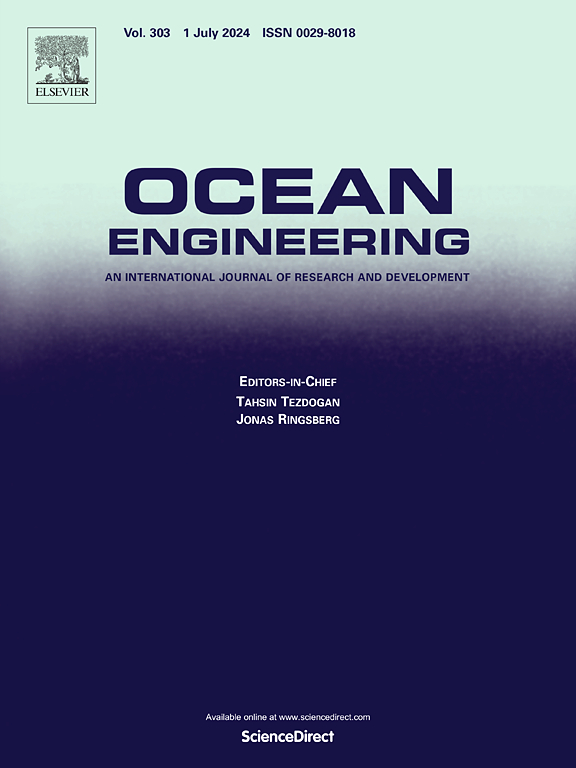CFD numerical simulation of wave interaction for a TLP floating offshore wind turbine with porous structural members
IF 4.6
2区 工程技术
Q1 ENGINEERING, CIVIL
引用次数: 0
Abstract
Designing stable floating support structures for offshore wind turbines in energetic environments is crucial to reducing the cost of energy. Porous structural members are commonly employed in offshore structures to passively attenuate wave reflection. Using a Computational Fluid Dynamics (CFD) numerical model, this paper investigates the motion response of a Tension Leg Platform (TLP) with porous outer structural members. It is further extended to study the hydrodynamic loads and flow fields with various wave conditions, Numerical validation was performed with data from physical model tests conducted at Dalian University of Technology. The results demonstrate that incorporating porous outer structural members significantly reduces the surge response and mooring line tension of the TLP platform. Notably, the fundamental frequency of the surge motion undergoes a significant shift. The mechanism behind this phenomena is analyzed through wave-structure interaction modeling, revealing that the opposite velocity phase of water particles on either side of the porous members leads to a decrease in horizontal hydrodynamic loads. Additionally, the porous elements increase the viscous damping ratio of platform motions, achieving a 43.1 % reduction in peak tendon tension. These findings highlight the potential benefits using porous structural components to enhance the performance and economic viability of floating offshore wind turbine (OWT) systems.
带多孔结构部件的 TLP 漂浮式海上风力涡轮机波浪相互作用的 CFD 数值模拟
本文章由计算机程序翻译,如有差异,请以英文原文为准。
求助全文
约1分钟内获得全文
求助全文
来源期刊

Ocean Engineering
工程技术-工程:大洋
CiteScore
7.30
自引率
34.00%
发文量
2379
审稿时长
8.1 months
期刊介绍:
Ocean Engineering provides a medium for the publication of original research and development work in the field of ocean engineering. Ocean Engineering seeks papers in the following topics.
 求助内容:
求助内容: 应助结果提醒方式:
应助结果提醒方式:


